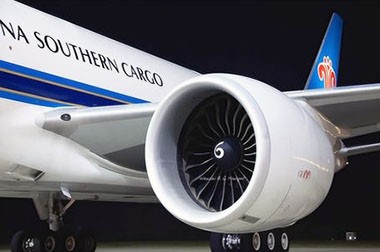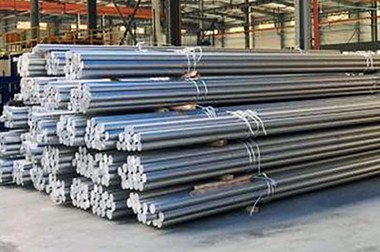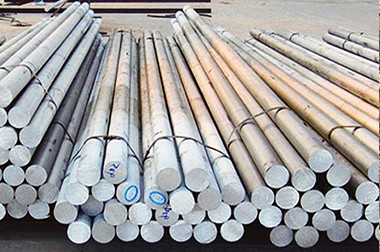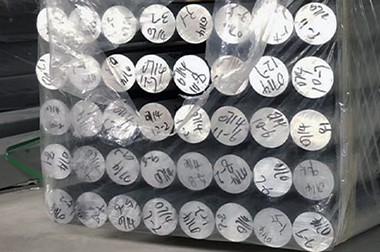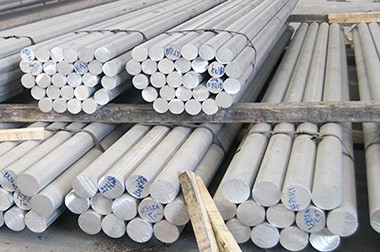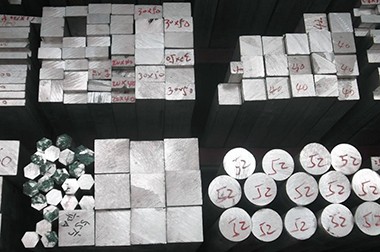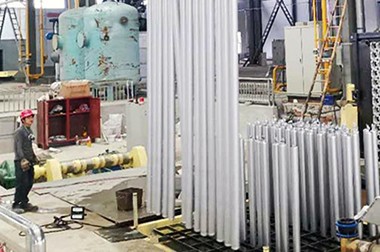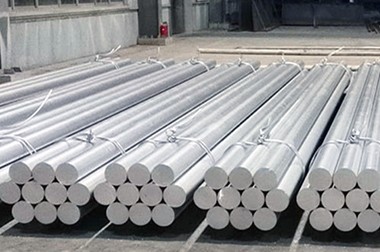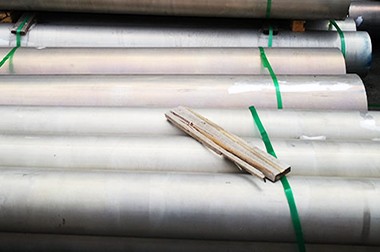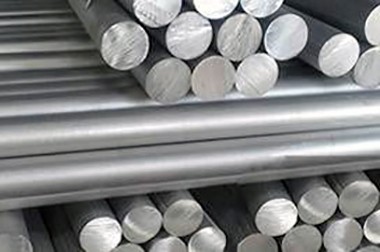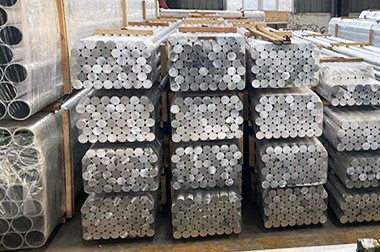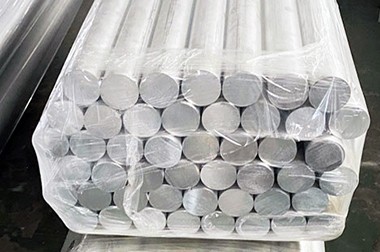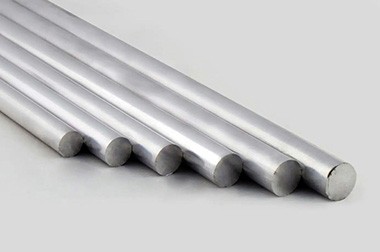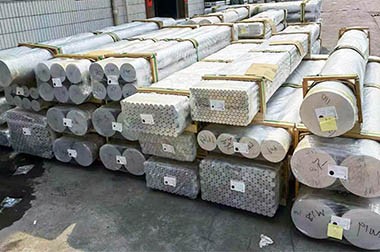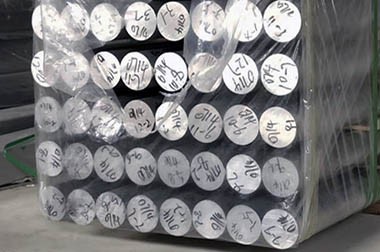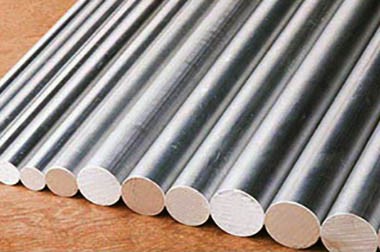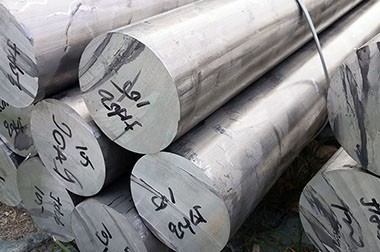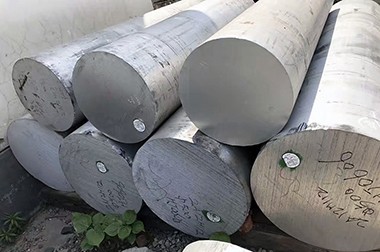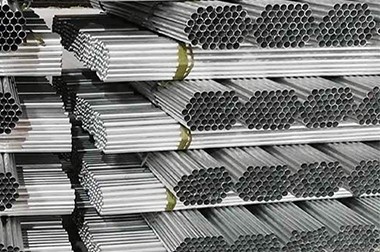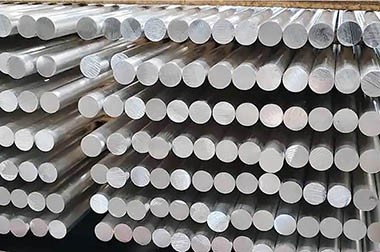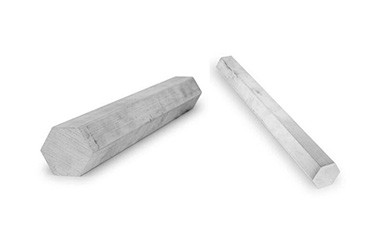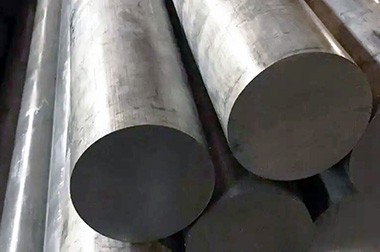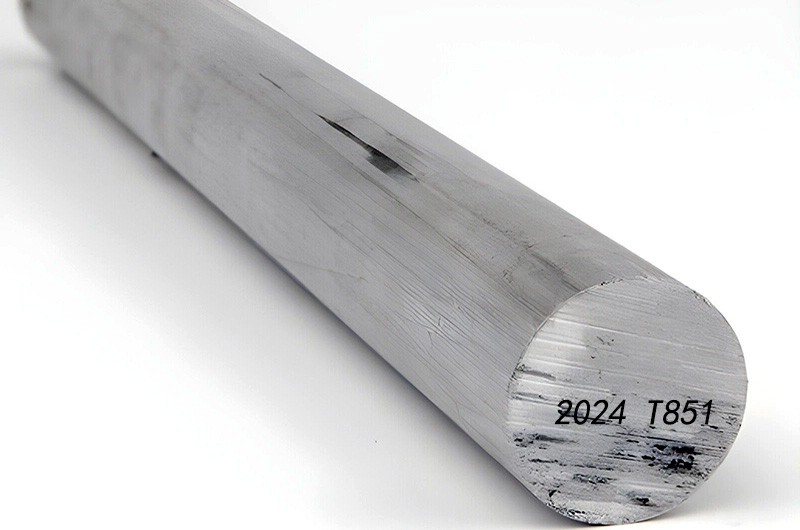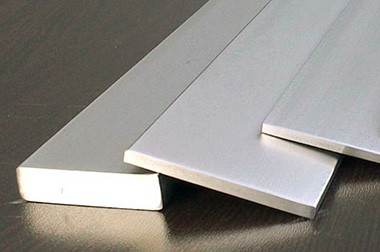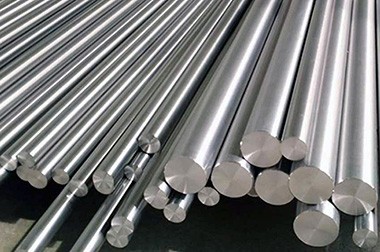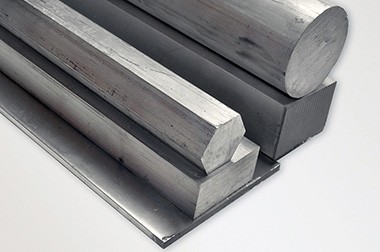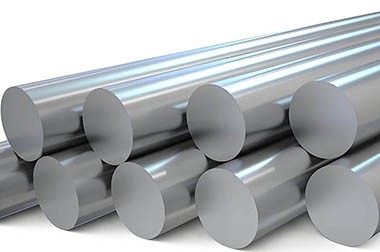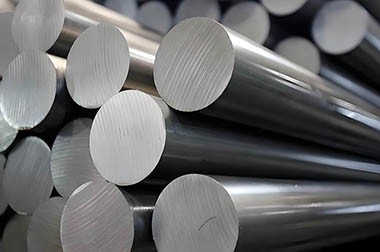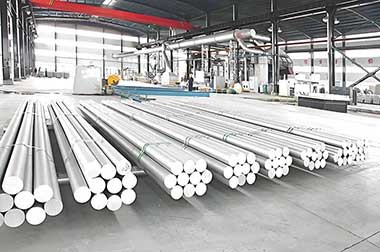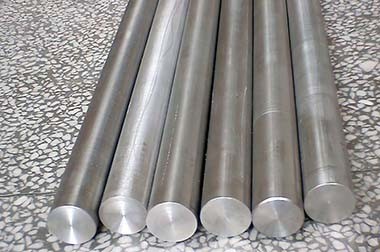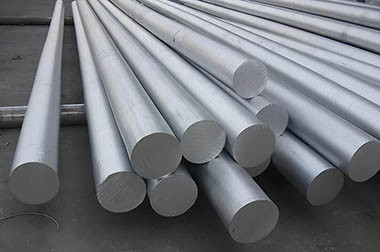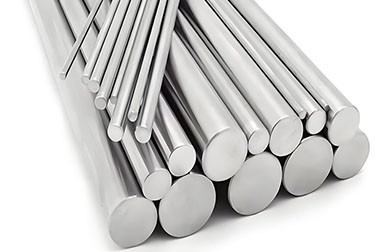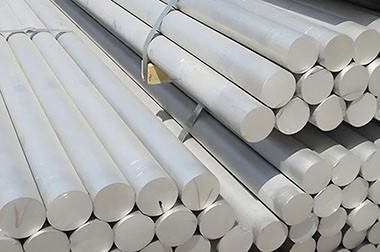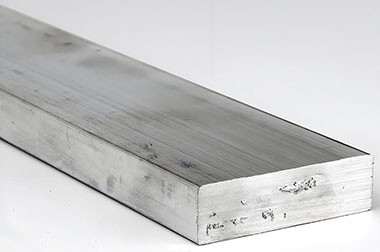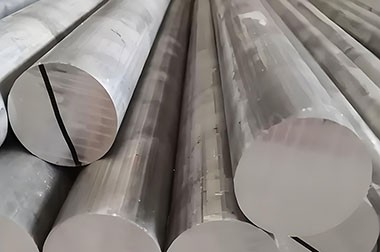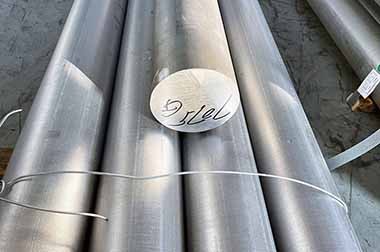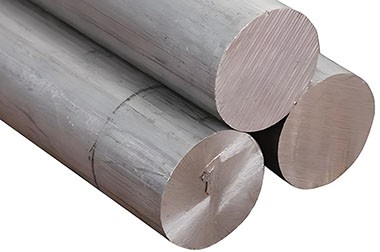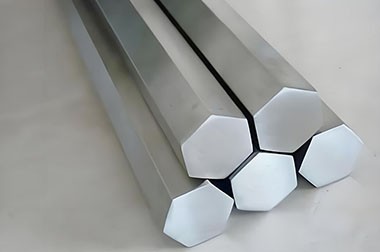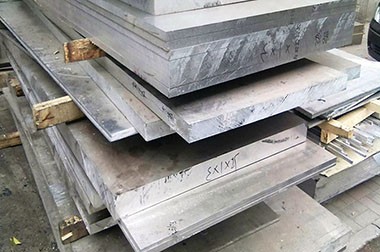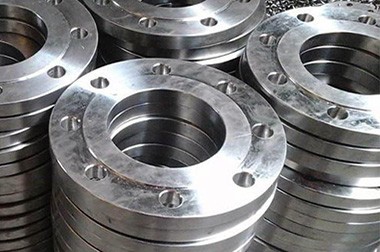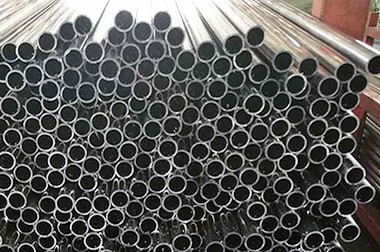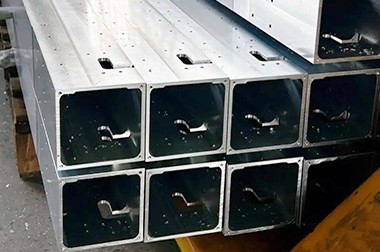2219 Aluminum Round Bar
The 2219 aluminum round bar is a circular bar made of aluminum-copper alloy (alloy 2219) as the primary material. It features high strength and high-temperature resistance, making it widely used in aerospace, automotive manufacturing, and other fields.
The 2219 aluminum round bar is made from an age-hardenable aluminum-copper alloy (part of the 2000 series) and is renowned for its excellent mechanical properties. This alloy is highly regarded for its high strength, superior fracture toughness, and good weldability after proper heat treatment. In the T8 temper, it exhibits resistance to stress corrosion cracking, making it ideal for critical applications in high-temperature environments.
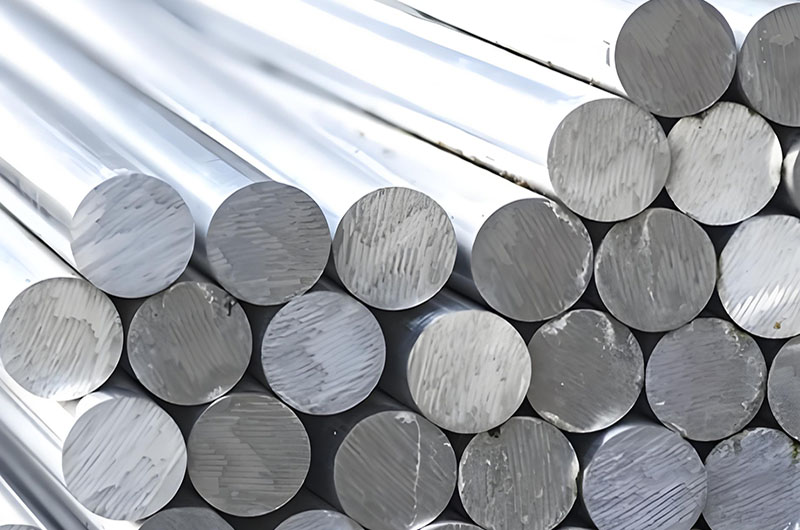
As a leading manufacturer of precision aluminum products, Haomei Aluminum offers high-quality 2219 aluminum round bars that comply with AMS 4162, ASTM B211, and ASTM B247 standards. Our 2219 aluminum bars are available in T6, T851, T8511, and O tempers, with diameters ranging from 3 mm to 800 mm and lengths up to 12 meters. These bars provide exceptional strength, thermal stability, and corrosion resistance. Our custom solutions are ideal for aerospace structures, precision machining, automotive suspension, marine components, and high-temperature industrial applications, ensuring optimal performance and reliability. Contact us for tailor-made aluminum bar solutions to meet your specific requirements!
2219 Aluminum Round Bar Characteristics
| Characteristics | Description |
| High-Temperature Resistance | The 2219 Aluminum Round Bar performs excellently under extreme temperature conditions, maintaining mechanical integrity in environments ranging from -452°F to 600°F (-269°C to 315°C). This characteristic makes it particularly suitable for applications that are highly sensitive to temperature variations, such as spacecraft structures, rocket engine combustion chamber liners, and high-temperature liquid transport systems. Its high-temperature strength comes from its primary alloying element, copper (Cu), ensuring excellent structural stability and creep resistance in high-temperature environments while maintaining sufficient toughness at extremely low temperatures, making it suitable for cryogenic propellant storage tanks. |
| Corrosion Resistance | The 2219 Aluminum Round Bar has moderate corrosion resistance and is particularly susceptible to corrosion in marine or high-humidity environments. Therefore, additional surface treatments are usually required to enhance its corrosion resistance. Common methods include anodizing, electrophoretic coating, or chromate treatment to form a dense protective film that improves oxidation resistance. These treatment processes make it suitable for aircraft fuselage structures, fuel tanks, and spacecraft components, ensuring stable mechanical properties and structural integrity over long service periods. |
| Fatigue Resistance | The 2219 Aluminum Round Bar exhibits excellent fatigue resistance, allowing it to withstand long-term cyclic loads without fatigue failure. This property is crucial in aerospace applications, especially in aircraft skins, wing structures, and landing gear attachments that endure repeated stress, effectively extending their service life. Its high fatigue resistance stems from its uniform microstructure and well-balanced alloy composition, providing better crack propagation resistance under cyclic loads, ensuring reliability and safety in high-strength working environments. |
2219 Aluminum Round Bar Specifications and Availability
| Property | Details |
| Standards | AMS 4162, ASTM B211, ASTM B247 |
| Dimensions | Diameter Range: 3 mm - 800 mm |
| Length: Up to 12 m | |
| Temper | T6, T851, T8511, O |
| Characteristics | Customizable based on specific strength and ductility requirements |
2219 Aluminum Round Bar Chemical Composition
The 2219 alloy is primarily composed of aluminum (remaining content), with 5.8–6.8% copper as the main alloying element. Other components include manganese (0.2–0.4%), silicon (≤0.2%), titanium (0.02–0.1%), and trace amounts of vanadium and zinc. This copper-rich composition enhances strength, weldability, and high-temperature performance.
The typical chemical composition of 2219 aluminum alloy is as follows:
- Aluminum (Al): Remaining content (approximately 91.5–93.8%)
- Copper (Cu): 5.8–6.8%
- Manganese (Mn): 0.2–0.4%
- Silicon (Si): ≤ 0.20%
- Iron (Fe): ≤ 0.30%
- Magnesium (Mg): ≤ 0.02%
- Titanium (Ti): 0.02–0.10%
- Vanadium (V): 0.05–0.15%
- Zinc (Zn) and Zirconium (Zr): Small amounts added to balance the alloy
This composition gives 2219 high strength and excellent thermal and mechanical properties. However, compared to some other aluminum alloys, its copper content does reduce its inherent corrosion resistance. In many cases, 2219 is clad or coated to improve its corrosion performance.
2219 Aluminum Round Bar Mechanical Properties
When processed into a round bar form and heat-treated (e.g., T8511 condition), 2219 aluminum typically exhibits:
- Tensile strength: Approximately 58 ksi (400 MPa)
- Yield strength: Approximately 42 ksi (290 MPa)
- Elongation: Typically around 6% over a 2-inch gauge length
These properties make it suitable for applications where a high strength-to-weight ratio is critical, such as aerospace structures.
2219 Aluminum Round Bar Machinability
2219 aluminum is highly regarded for its following characteristics:
- Machinability: Easy to machine in the annealed state. However, machining in the heat-treated state requires careful control of tool wear.
- Weldability: While it is readily weldable, especially in filler rod applications, excessive welding heat input can negatively impact its corrosion resistance. Post-weld heat treatment is often required to restore properties. It is highly compatible with TIG, MIG, and resistance welding, which is crucial in aerospace manufacturing.
- Heat Treatment: This alloy is typically subjected to solution heat treatment followed by aging to achieve the desired strength. Common tempers include T4, T6, and T8511, which optimize its mechanical properties for various applications.
2219 Aluminum Round Bar Applications
| Application Field | Description |
| Aerospace | 2219 Aluminum Round Bar is widely used in critical components such as aircraft fuselage sections, wing structures, and fuel tanks. It is also used in spacecraft components, including standard-weight fuel tanks on space shuttles and structural components on the International Space Station. |
| Precision Machining | With its excellent machinability and consistent performance, 2219 Aluminum Round Bar is an ideal choice for high-precision, load-bearing components. |
| Automotive | 2219 Aluminum Round Bar is suitable for high-stress components such as suspension systems and brake parts, enhancing strength and durability. |
| Marine | 2219 Aluminum Round Bar is used in corrosion-resistant hulls and deck fittings, ensuring durability in harsh marine environments. |
| Industrial | 2219 Aluminum Round Bar is suitable for machinery requiring high-temperature endurance, such as molds and tools, improving equipment lifespan and stability. |
Advantages of 2219 Aluminum Round Bar Over Other Alloys
Compared to 6061 or 7075 aluminum, 2219 excels in high-temperature stability and weldability but requires coating for optimal corrosion resistance. Its balance of strength and machinability makes it a preferred choice for critical aerospace and defense projects.
The 2219 aluminum round bar is a high-strength, heat-treatable alloy with a tailored composition designed to provide excellent structural performance in demanding environments. Its unique balance of strength, toughness, and machinability makes it an indispensable material in aerospace and high-temperature applications, though additional measures (such as cladding) may be necessary to enhance its corrosion resistance.
You may also be interested in the following
-
2124 2219 Aerospace Aluminum for Engine Support Structure
Alloys 2124 and 2219 are used in engine support structures due to their high strength and excellent fatigue resistance, providing durability under extreme conditions.

